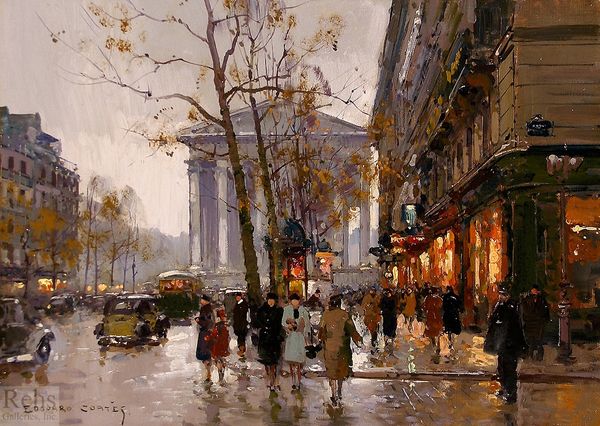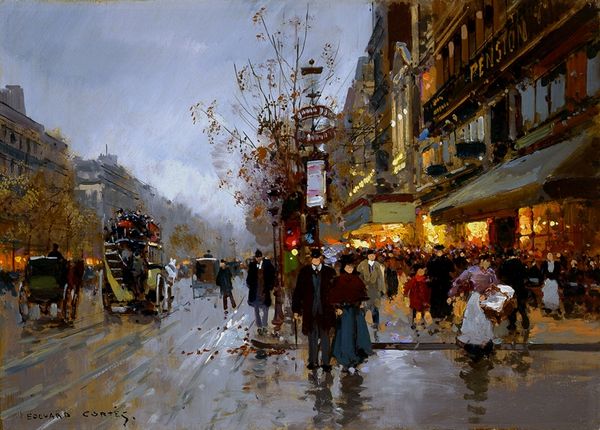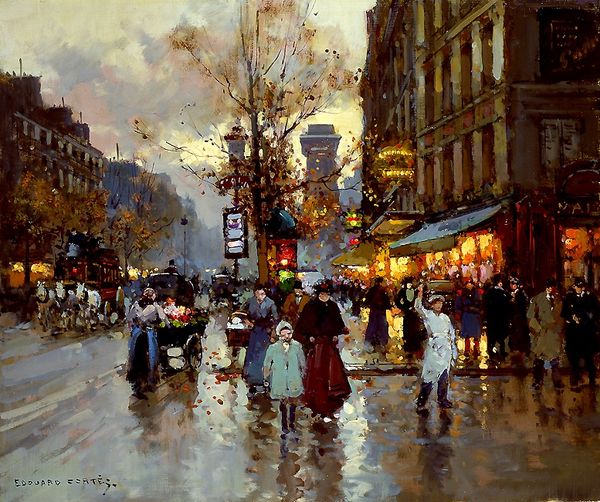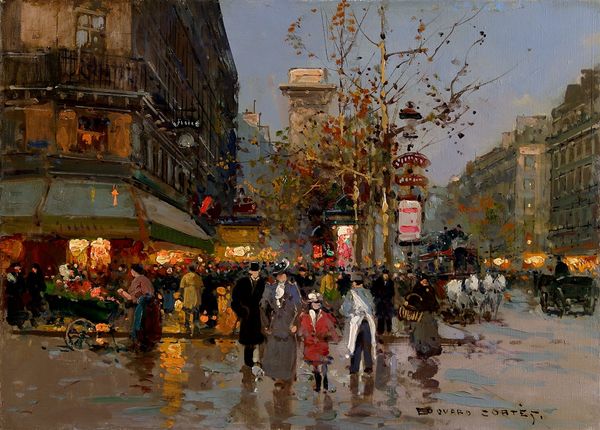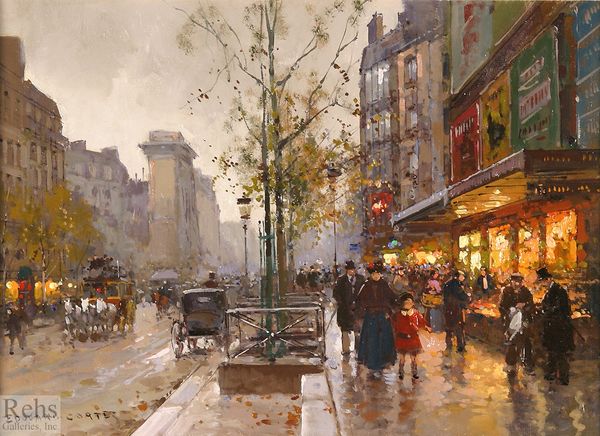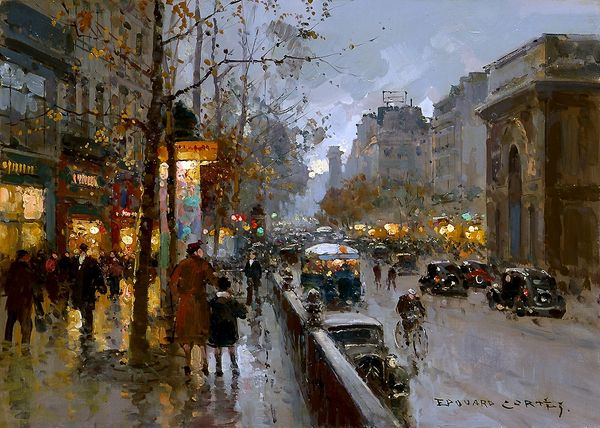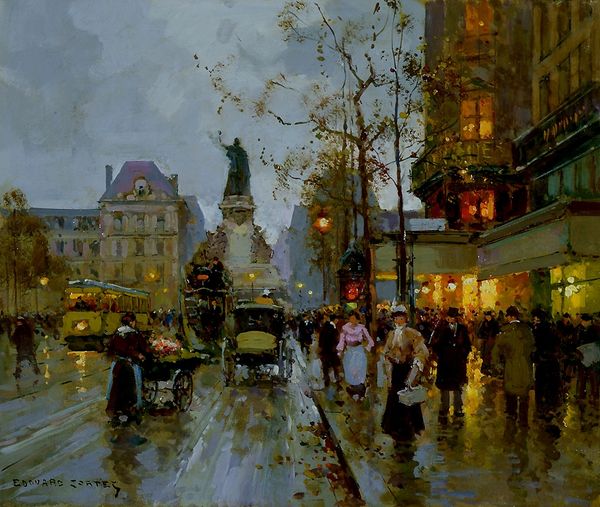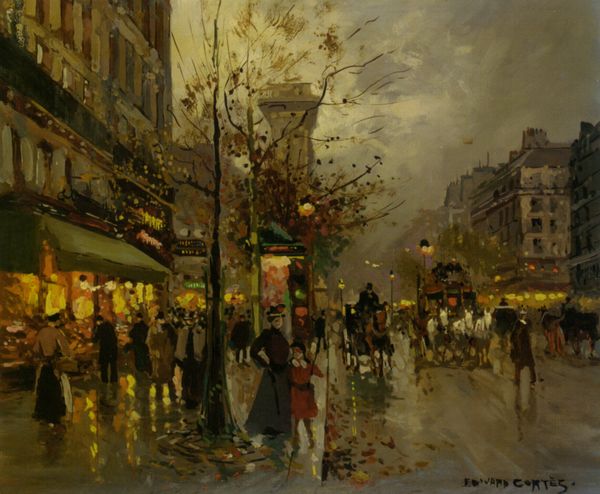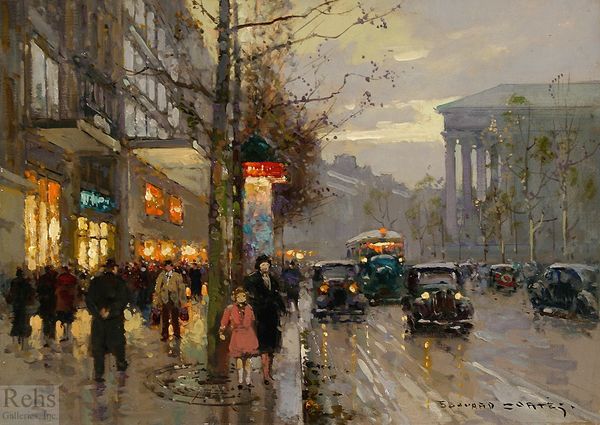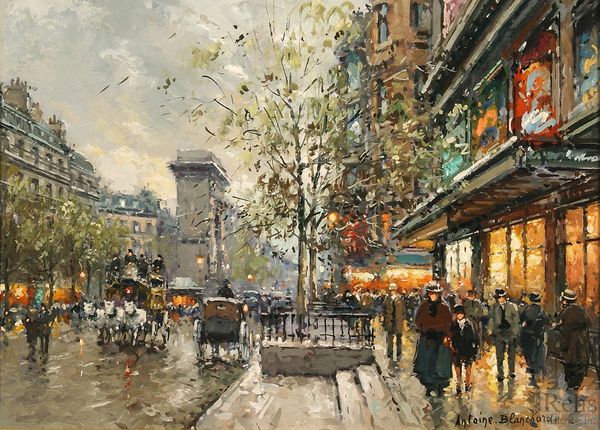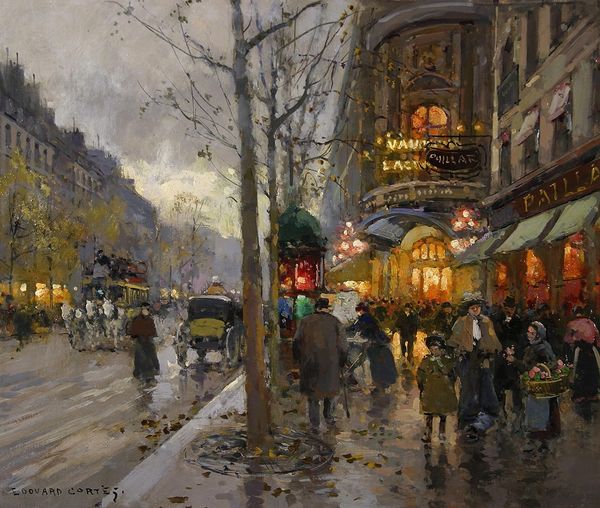
painting, plein-air, oil-paint
#
urban landscape
#
painting
#
impressionism
#
impressionist painting style
#
plein-air
#
oil-paint
#
landscape
#
urban cityscape
#
impressionist landscape
#
oil painting
#
romanticism
#
cityscape
#
genre-painting
#
street
#
building
Copyright: Edouard Cortes,Fair Use
Curator: Edouard Cortes gifts us a view of the "Champs-Élysées," rendered in oil paint with an impressionistic verve, bringing forward layered questions of representation and spectatorship within the Parisian landscape. Editor: Oh, wow. I mean, the first thing that hits you is how alive it feels. The wet street reflecting all those lights…it’s almost humming with energy, right? It feels like a stage set, just waiting for something dramatic to happen. Curator: Absolutely. Consider the period—likely early 20th century. Cortes masterfully captures not just the physical space, but also the socio-economic fabric. The blurred figures, the emergent automobile culture, the architecture, each aspect points to the modernization underway. Whose Paris is this, and who is granted access? Editor: Hmmm. You know, I'm getting a bit of melancholia too. The muted sky, the way the light sort of pools on the ground. It feels a little lonely even amidst all the activity. Like being in a crowd but still feeling separate. Plus, all those flickering lights. Like old movie houses before everyone started staying home watching those "moving pictures." Curator: The romantic interpretation holds sway. The solitary figures echo similar themes we see explored across Europe: alienation, class dynamics. The way Cortes frames the Arc de Triomphe in the distance places it almost as a beacon, something those present might aspire to but remain separated from due to any combination of capitalistic ventures, ableism, patriarchal demands... Editor: It's interesting you say that. It's funny; it could be seen as a happy snapshot of city life. For me, it’s like longing for something that's slipping away, some essence of life or possibility lost. Kind of tragic when you stop to consider it. The figures, especially... Curator: Precisely, these sorts of works ask us to evaluate how we ourselves exist with the structures that exist within public. It also speaks to access -- can the family, likely immigrating given the historical placement and access to social standing and income level of the family... are they able to get to where they need to safely and unharmed in mind, body, soul, and future? Editor: What I like most is it takes what could be ordinary - a city street - and turns it into something haunting and deeply affecting. I will certainly consider this notion more as I'm sure a second and third looks reveals even more. Curator: Indeed. Through a lens attentive to questions of gender, race, and socio-economic circumstance, we can fully appreciate the intersectional layers imbedded within the 'everyday'. It asks us as active, participating community members to further consider what active measures of community wellness look like through an artistic, architectural, societal lens.
Comments
No comments
Be the first to comment and join the conversation on the ultimate creative platform.
